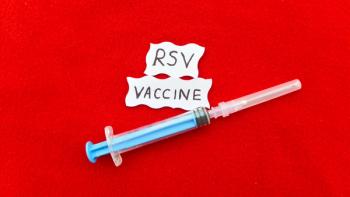
Kids' Use of Asthma Controller Drugs Doubled
More children are relying on long-term controller medications to keep asthma in check, a new report finds.
More children are relying on long-term controller medications to keep asthma in check, a new report finds.
The percentage of US children with asthma who use long-term control agents to treat their symptoms has doubled over the past decade, according to
Between 1997 and 2008, the proportion of children with asthma who were treated with corticosteroids, beta2-agonists, and leukotrienes rose from 29% to 58%, AHRQ reported in its latest News and Numbers analysis. The findings are based on data from the Medical Expenditure Panel Survey, which looks at heath care utilization and expenditures by Americans.
The broad use of controller drugs reflects changes to treatment guidelines for pediatric asthma, which now recommend a
- Use of inhaled corticosteroids increased from 15% to 40%, use of beta2-agonists rose from 3% to 13%, and use of leukotriene rose from 3% to 13%.
- Use of reliever medications fell from 44% to 30%, and use of oral corticosteroids fell from 17% to 9%.
- Average spending on all asthma drugs more than quadrupled from $527 million to $2.5 billion (in constant 2008 dollars).
- Spending on controller medications increased 7-fold, from $280 million to $2.1 billion.
- Spending for reliever drugs increased 59%, from $222 million to $352 million.
- Spending on oral corticosteroids fell 68%, from $25 million to $8 million.
- Average annual out-of-pocket spending on all prescribed asthma medications nearly doubled from $65 to $123 per person.
Overall, the average annual percentage of children who were treated for asthma increased from 5% in 1997-1998 to 6.1% in 2007-2008. Past AHRQ analyses have shown that although the prevalence of
“Given that asthma medications are the most widely used chronic medication in children, it is important to understand how children’s use of and expenditures for asthma medications have changed in response to evolving treatment guidelines and the introduction of new drugs,” authors wrote in the new report.
For other articles in this issue, see:
- Medco CEO Under Fire for Anti-Retail Remarks
- Top Medicare Plans Cash in on 5-Star Rank
Newsletter
Stay informed on drug updates, treatment guidelines, and pharmacy practice trends—subscribe to Pharmacy Times for weekly clinical insights.




















































































































































































































